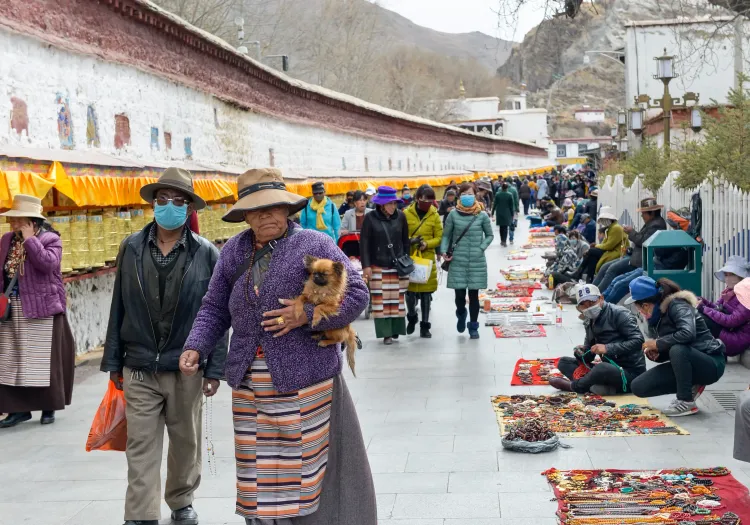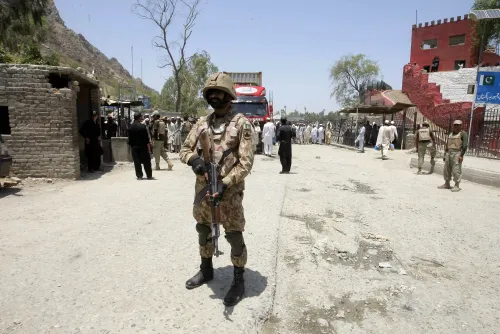Has the Chinese Communist Party Institutionalized Monitoring of Tibetan Buddhism?

Synopsis
Key Takeaways
- The CCP has formalized monitoring of Tibetan Buddhism since the late 1990s.
- There are around 1,700 monasteries and 46,000 monks in the Tibet Autonomous Region.
- Senior monastic appointments require party approval.
- Patriotic education sessions force monks to renounce the Dalai Lama.
- The CCP seeks to control the narrative of Tibetan Buddhism on an international scale.
Colombo, Oct 22 (NationPress) China's strategy regarding Buddhism in Tibet relies on three interconnected mechanisms - co-opting religious institutions, constructing a state-centric narrative, and projecting international influence. These strategies aim to reduce Tibetan Buddhism to a manageable component of the state's political framework. The CCP's control mechanisms exhibit notable reach but lack depth, a report indicated on Wednesday.
Since the late 1990s, the Chinese Communist Party (CCP) has formalized its surveillance of Tibetan Buddhism. Currently, the Tibet Autonomous Region boasts approximately 1,700 officially registered monasteries and around 46,000 monks and nuns, as detailed in a report from Sri Lanka's Ceylon Wire News.
A government-sanctioned management committee oversees each monastery in Tibet, and all senior monastic appointments require party approval. The “patriotic education” sessions, which have increased in Lhasa since 2008, compel monks to reject the Dalai Lama and pledge allegiance to the state.
“The clearest indication of state intervention is its assertion of the right to approve the reincarnation of the Dalai Lama. This bureaucratization of a sacred religious practice reflects Beijing’s belief that controlling succession is crucial to neutralizing a figure who symbolizes Tibetan religious and political identity,” the report states.
The narrative construction is integral to this initiative, with Tibet's incorporation into China in 1951 portrayed as a “Peaceful Liberation” that ended a feudal theocracy in textbooks, museums, and official media. The Party-state frequently emphasizes the financial resources allocated to restoring monasteries. Additionally, staged photographs of monks expressing gratitude to the party for their prosperity reinforce this narrative, the report highlighted.
“Beijing has also sought to extend its interpretation of Buddhism beyond its borders. It routinely funds international Buddhist conferences in Sri Lanka, Thailand, and Nepal and supports university research centers across Asia that promote a vision of Buddhism aligned with Chinese state narratives. This effort aims to position China, rather than the Tibetan diaspora, as the legitimate global hub of Buddhist thought and to mitigate the influence of the Dalai Lama, who remains one of the most revered religious leaders globally,” it mentions.
However, rather than resolving the question of Tibet’s future, Beijing's focus on controlling reincarnation risks turning the succession issue into a significant international flashpoint.
“The Tibetan situation underscores a broader truth. The CCP’s campaign is less about faith than about political legitimacy. By attempting to ‘Sinicize’ religion, embedding it with what the Party describes as ‘Chinese characteristics’, Beijing has inadvertently revealed its anxiety that spiritual traditions can mobilize loyalties beyond the Party-state’s grasp. The more the CCP endeavors to control Tibetan Buddhism, the more it highlights the resilience of the tradition it wishes to dominate.
“The contest over Buddhism in Tibet ultimately pertains to who defines moral authority in China’s border regions. The CCP’s control measures exhibit significant reach yet fragile depth. They illustrate that political power lacking moral consent is inherently insecure, and efforts to impose ideological control can sometimes strengthen the very traditions they aim to diminish,” the Ceylon Wire News report concluded.









